In machine vision, backlighting is one of the most common and useful lighting techniques. It’s typically used for parts presence/absence, gauging, and orientation/location, particularly when coupled with pick-and-place or vision-guided robotics applications. However, incorporating backlighting into machine vision systems can be difficult, primarily because component placement geometry requires access to the part top and bottom (or front and back) for the camera and backlight.
Subtitle for This Block
Title for This Block
Text for This Block
Struggles in Backlighting Vision Systems
Additionally, component placement geometry imposes restrictions when parts are moving on a conveyor line, especially if a backlight cannot be inserted into the conveyor where the product is effectively being “pushed” over the flush-lighting surface (Figure 1a). Most of these machine vision applications require only a silhouette, effectively generating instant contrast (commonly referred to as white background-black part) where it’s expected that light does not penetrate the part (See Figure 1b).
However, there are variations on the black-white silhouette theme – namely those applications requiring the light to differentially penetrate portions of the part. This could include applications that require locating a solid object of different composition or texture within another object, or identifying a liquid level in a package, for example. In this blog post, we will concentrate on differential backlight penetration and illustrate varying examples of where and why different wavelengths may be useful.
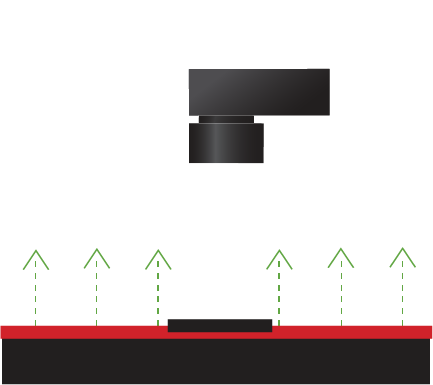
Figure 1a – Backlight Function Diagram
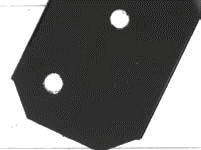
Figure 1b – Typical Silhouetted BL Image
Using Backlights to Verify Presence or Absence of Objects
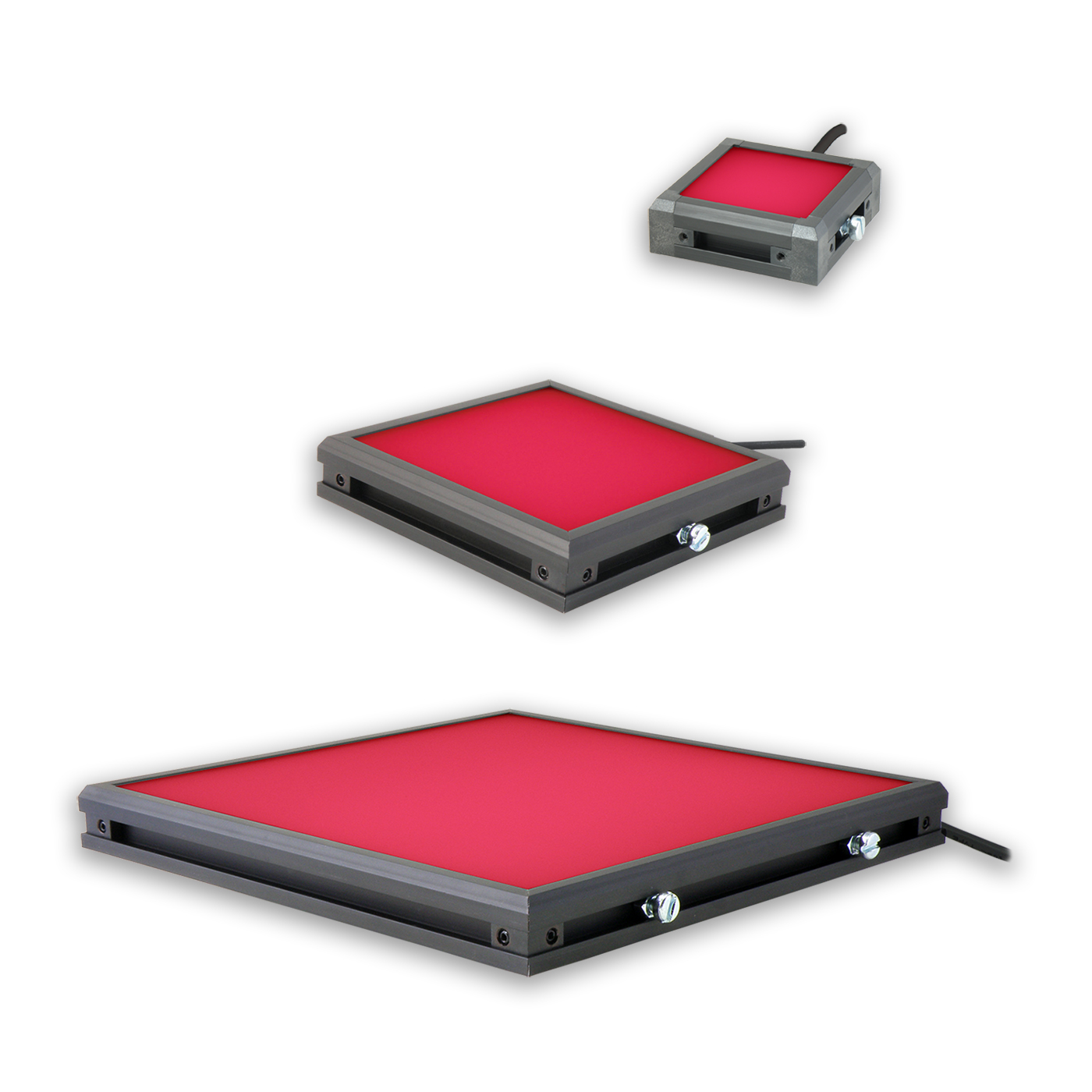
Figure 2a – Ai Backlight BL Series
A common backlighting application in the pharmaceuticals industry is to verify the presence of bandages, pads, or gauze materials after being wrapped in their sterile packages. Because both the inserted objects and their packaging are soft and often semi-transparent, we can readily inspect for presence/absence with a standard backlight (Figure 2a).
Figure 2b illustrates a small, cotton eye pad in its sealed, sterile paper wrapper; in this example, the vision system can quickly verify presence/absence, while gauging approximate size and shape parameters to verify the correct pad is wrapped. Compare this image with that in Figure 2c where no pad was inserted. Finally, in Figure 2d, we can see the result of more than one pad in the wrap. Note that in this application, backlight uniformity is less important than having sufficient light intensity to penetrate the object of interest and its packaging.
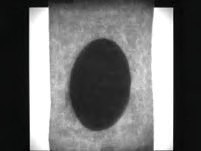
Figure 2b – Sterile Pad in Wrapper
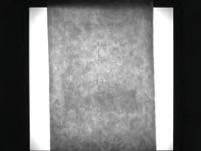
Figure 2c – No Sterile Pad Present
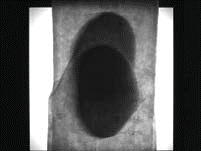
Figure 2d – Multiple Sterile Pads in Paper
How Wavelength Affects Backlight Applications
Is having sufficient intensity the only solution when looking to penetrate materials in backlighting applications? If we consider the visible and near-visible light spectrum (Figure 3), we see that white, or human-visible light, ranges from 400 nm to about 700 nm in wavelength. UV light ranges from 400 nm down to about 200 nm, and IR light ranges from 700 nm up.
With this information in mind, it is useful to remember there is a direct correlation between light wavelength and penetration ability; hence, for the same material, the longer wavelength light in backlighting applications – such as red or IR – may penetrate more deeply than blue, for example.
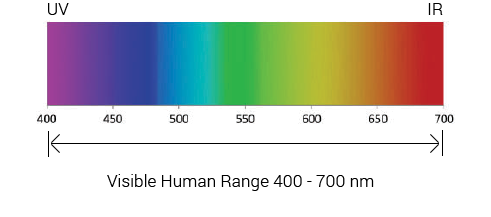
Figure 3 – Visible and Near-Visible Light Spectrum
Wavelength’s Effect on Machine Vision Backlighting Applications
Inspecting Semi-Transparent PCB
In this example, we used BL040401-660 (Red) and BL040401-880 (Near IR) surface mount backlights on a semi-transparent, populated PCB (Figs. 4a and 4b, respectively) to test how well each wavelength penetrated the material. We see that the 880 nm IR light better defines the traces in the board than the 660 nm Red light. However, how do we know that the IR light wasn’t just more intense with respect to the camera – or even that the camera was more sensitive to IR light?
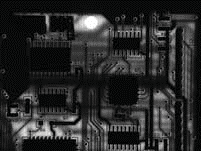
Figure 4a – PCB with Red (660nm) BL
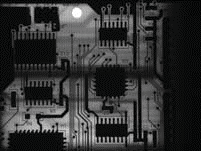
Figure 4b – PCB with IR (880nm) BL
Examining the board images more closely, we notice a hole in the upper portion of the board. Comparing this to the 880 nm IR image, see how the red (shorter wavelength) light was so bright it bloomed the hole edges. Taking this into consideration, we can conclude that despite the camera being more sensitive to the red light, the IR light clearly penetrated the board better.
Inspecting Incandescent Light Bulb Filament
A similar penetration trend can be observed in inspecting an incandescent light bulb filament. A series of images taken with 470 nm blue, 660 nm red, and 880 nm IR back lights (Figures 5a, 5b, 5c respectively) illustrate this point. Blue light does not penetrate the light bulb glass and diffuser coatings; the red light shows some filament detail; and ultimately, the IR light clearly produces the most useful inspection detail.
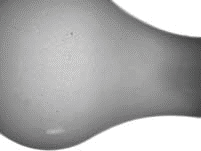
Figure 5a – Blue (470nm) BL
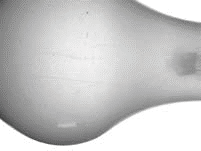
Figure 5b – Red (660nm) BL
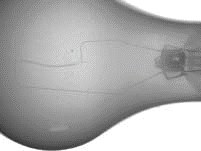
Figure 5c – IR (880nm) BL
Verifying Fluid Fill-Level in Bottles
Another common backlighting application is verifying fluid fill-level in bottles. In this example, a colored glass bottle contains clear cologne. If we backlight with red, the most common color, we see that the light does not penetrate the bottle (Figure 6a). Based on the general assumption that a longer wavelength light penetrates better, we switch to IR 880 nm light; notice it still does not penetrate the bottle and its contents (Figure 6b). For the sake of completeness, we attempt blue, the shortest wavelength light; interestingly, it penetrates the bottle and contents well enough to verify the liquid fill height (Figure 6c)
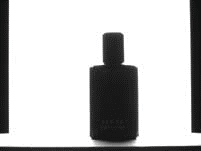
Figure 6a – Cologne Bottle with Red
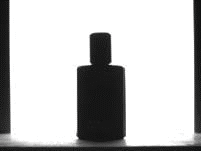
Figure 6b – Cologne Bottle with IR
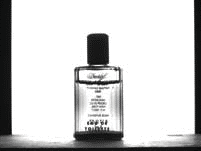
Figure 6c – Cologne Bottle with Blue
It is important to note that part color has a different effect on contrast levels depending on whether we are inspecting opaque or semi-transparent objects. In the case of opaque objects, we are inspecting with reflected light rather than transmitted light (backlighting), so wavelength-specific color contrast is very important. When backlighting semi-transparent parts, color typically plays a minor role in wavelength-specific differential light transmission through an object, whereas the material’s composition, internal structure, and/or texture are significantly more influential in this regard.
Available Backlight Solutions for your Machine Vision Needs
Keeping in mind the varying impacts that wavelength and intensity from backlights can have on your inspection system, it can be difficult to know exactly what lighting solution is best for your application. Our team of experts at Ai are here to work through your challenges with you – and are committed to helping you find the most accurate solution for your machine vision needs. Contact us today to assist you in your backlighting application!

